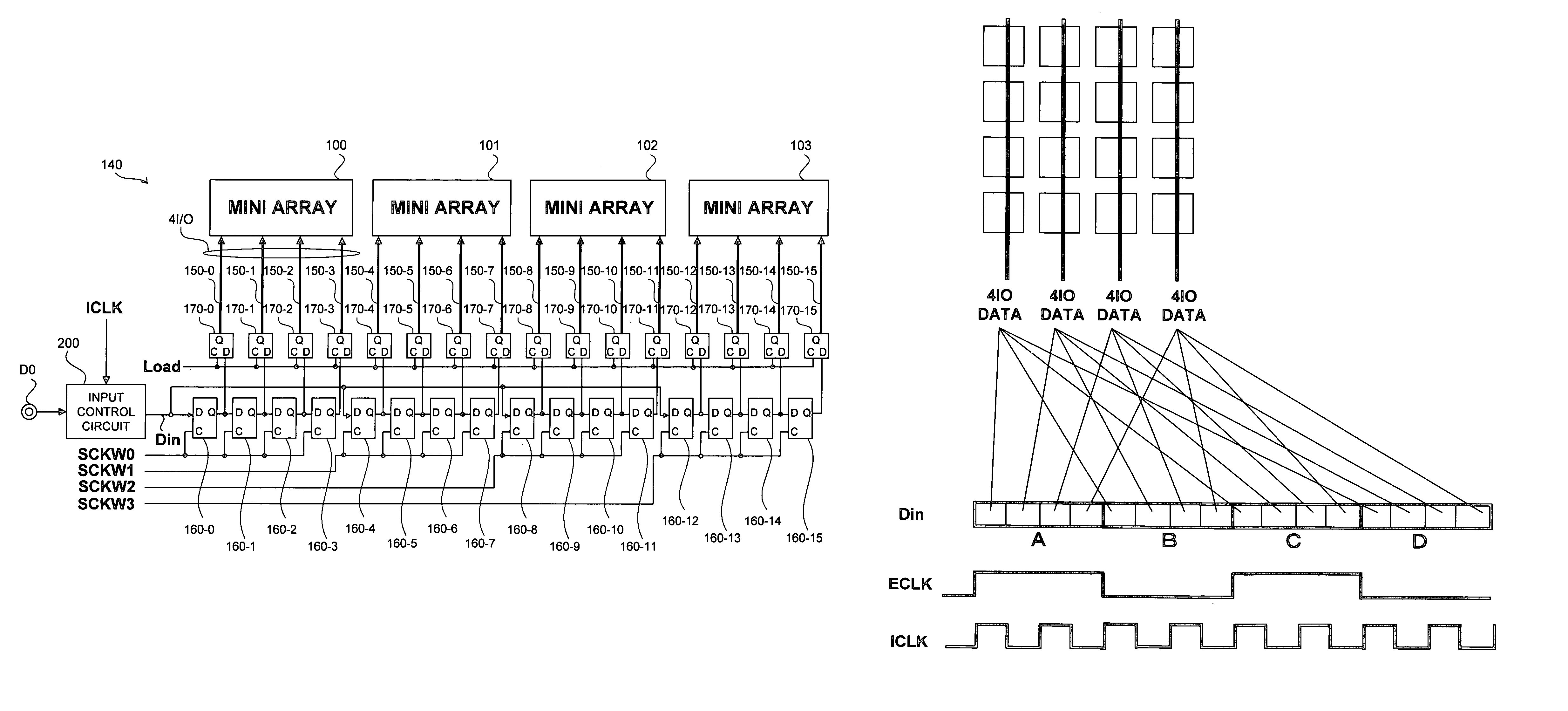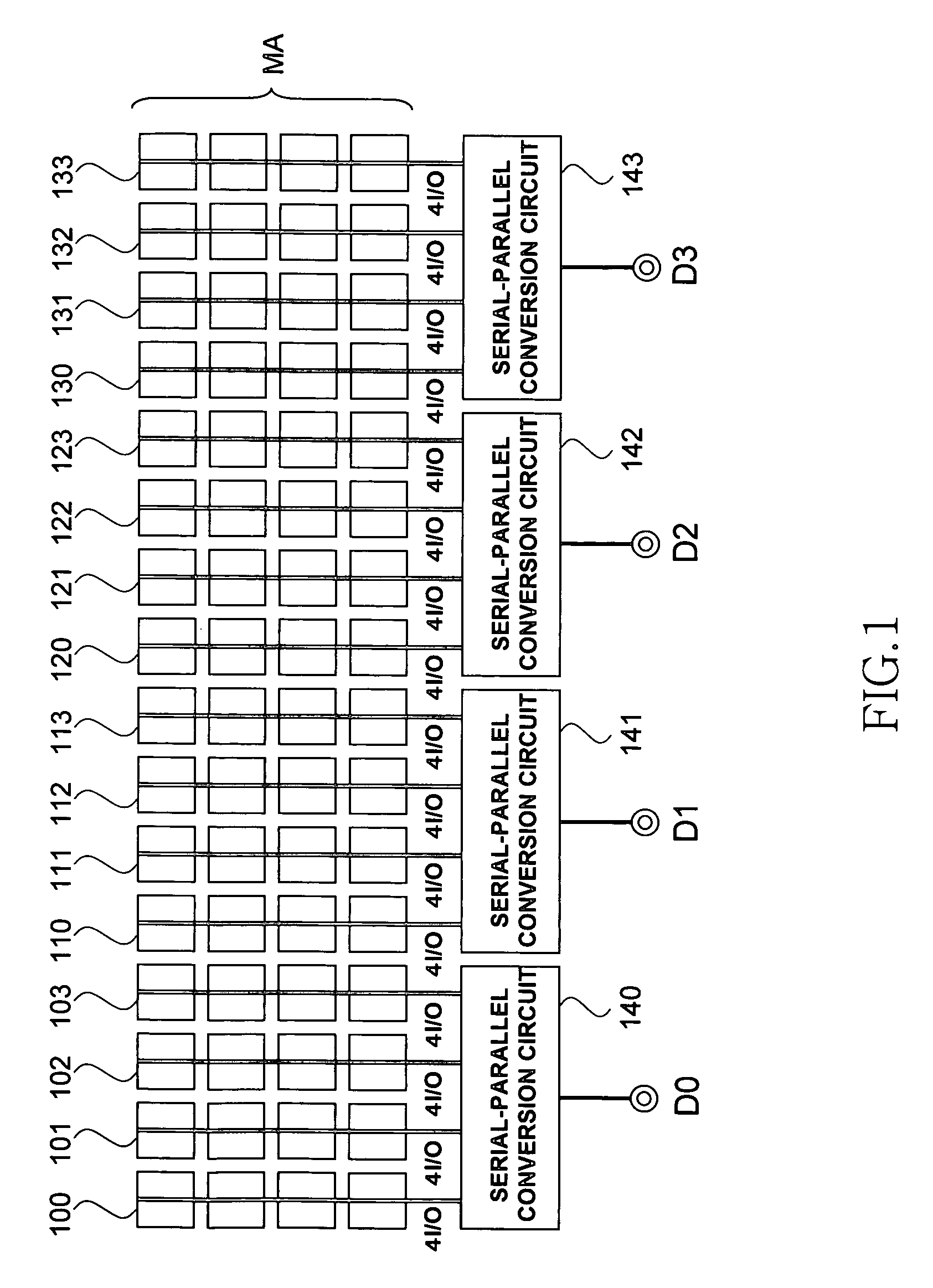Semiconductor memory device and testing method thereof
a memory device and semiconductor technology, applied in the direction of information storage, static storage, digital storage, etc., can solve the problems of inability to use conventional testers without this capacity, inability to increase the speed of a dram core in proportion to an input and output signal rate, and the cost of manufacturing a semiconductor memory device can be reduced
- Summary
- Abstract
- Description
- Claims
- Application Information
AI Technical Summary
Benefits of technology
Problems solved by technology
Method used
Image
Examples
Embodiment Construction
[0025]Preferred embodiments of the present invention will now be explained in detail with reference to the drawings.
[0026]FIG. 1 is a schematic diagram of an entire configuration of a semiconductor memory device according to a preferred embodiment of the present invention.
[0027]The semiconductor memory device according to the present invention is a DRAM. As shown in FIG. 1, the semiconductor memory device includes a core region MA constituted by a plurality of mini arrays, data input and output pins D0 to D3, and serial-parallel conversion circuits 140 to 143 that are disposed between these data input and output pins and mini arrays.
[0028]The semiconductor memory device also includes various other elements necessary for the operation of the DRAM, such as various decoder circuits, precharge circuits, address pins, and command pins. However, these elements are not directly relevant to the scope of the invention, and are therefore omitted from the drawing.
[0029]The semiconductor memory...
PUM
 Login to View More
Login to View More Abstract
Description
Claims
Application Information
 Login to View More
Login to View More - R&D
- Intellectual Property
- Life Sciences
- Materials
- Tech Scout
- Unparalleled Data Quality
- Higher Quality Content
- 60% Fewer Hallucinations
Browse by: Latest US Patents, China's latest patents, Technical Efficacy Thesaurus, Application Domain, Technology Topic, Popular Technical Reports.
© 2025 PatSnap. All rights reserved.Legal|Privacy policy|Modern Slavery Act Transparency Statement|Sitemap|About US| Contact US: help@patsnap.com



